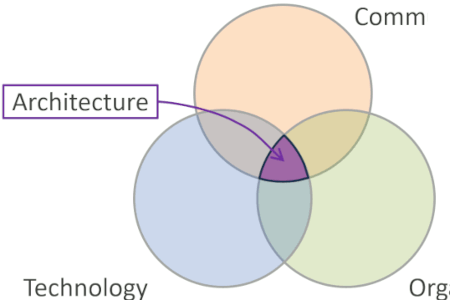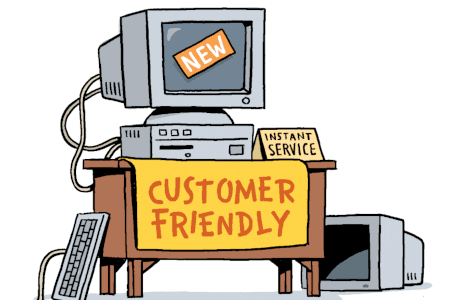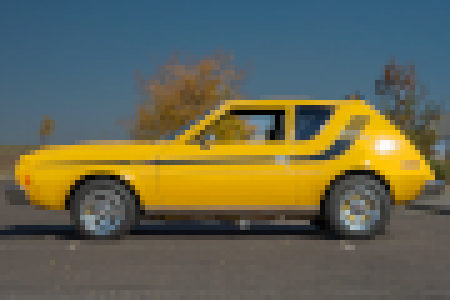Updated: Category: Strategy
When a vendor invites customers or prospects, it’s assumed that the vendor will tell them something. Customers sit in impressive keynotes, major product announcements (most of which won’t ship for a while), technical sessions, and a special “executive track” (usually with less content). Even though I love speaking at conferences (doing a part of the Munich Cloud Summit Keynote in German was especially fun), I always felt that the worst thing you can do with and to smart people is to ask them to be quiet. Because I enjoy speaking with CTOs (see Speaking CTO, Part 1) in a two-way fashion, my colleagues and I thought up a new format for engaging with our customers.
Called the CTO Round Table, the basic concept is simple: invite a few smart people and give them a topic to discuss; listen carefully and moderate lightly when needed. However, as usual, it’s the details that make it work well, so we learned, and improved, a lot along the way over several instances held in Tokyo and Osaka. Starting last fall, we held several round tables with major IT decision makers from high-end retailers, convenience stores, electronics retailers, consumer goods, automotive, e-Commerce and social networks.
Tokyo’s GDP
Having lived in Tokyo for over 4 years previously, I am somewhat known for being a Japanophile (I am typing this on my favorite laptop, a Panasonic Let’s Note CF-SV, much lighter than a MacBook air, i7 CPU, higher screen resolution, HDMI output, …). Oddly, though, economic news from Japan are rarely good. While there seems to be no end to unusual or wacky things originating from Japan, the economic outlook is quite the opposite, pretty drab, interrupted only by the occasional corporate scandal. So, it’s easy to forget that Japan is the 3rd largest economy in the world with a GDP clocking in at a good 5 Trillion USD. Putting China aside for a moment, the next closest Asian country in terms of GDP is Korea with 1.6 Trillion, followed by Indonesia with about 1 Trillion. Despite rapid growth in Southeast Asia (that’s why I am here!), Japan’s economy alone is roughly double that of all Southeast Asian countries combined.
Japan is also home to world’s largest urban area, Tokyo. There are numerous ways to count the size of a city or metropolitan area, but if you take the “satellite view” approach, Tokyo comes in at about 37 million people according to Wikipedia, or almost a third of the country’s population. Tokyo’s GDP alone is estimated at around USD 1.8 Trillion (Wikipedia), more than many countries. Whichever company isn’t headquartered in Tokyo, is likely to be in Kansai (Osaka, Kyoto) a quick 2.5h train ride away.
Why I am singing the praises of Tokyo’s economic density? Because it makes it the ideal place to talk to CTOs and senior IT decision makers.
Necessity was the mother of this invention
The CTO Round Table, like many things, was born out of necessity. We were planning to have a special session for senior technical leaders (with content) at the Cloud Next Tokyo event last September. However, the idea came a bit late and for an event of such scale making late changes is about the worst thing you can do to the organizers. So, instead of a full session, we booked a meeting room and invited only a small handful of customers. This unusual setup led to the presentation becoming more of a conversation, which all participants and our team considered very productive. So we decided to turn it into something official.
CTO Round Table Concept
And thus the CTO Round Table was born. The basic concept is simple:
- Invite 6-8 customers for a discussion on a specific topic, usually around cloud migration or organizational transformation
- Have a senior person (aka “thought leader”) set the scene for the discussion
- Break the discussion into segments to keep it focussed and avoid losing energy
- Focus on concepts and solutions, not products
- As is common in Japan, provide simultaneous translation (which is always a minor miracle to me – I am essential bilingual, but useless as a translator)
Sounds simple enough. Of course, the real magic is in the nuances:
- We designed the event to be informal, almost a bit scruffy, to set the expectation that this isn’t your typical marketing event. There’s nothing wrong with marketing events but people have been primed to go into “listening mode” based on past experience. We wanted people to feel that this event is different.
- Having the meeting in the morning optimizes participants’ time. A 30 minute standing breakfast acts as a buffer for people to arrive in comfort and gives participants a chance to meet each other.
- Invitations were made very selectively. We made it clear that attendees need to be senior decision makers and are expected to actively contribute to the discussion. We also realized that the number of active participants doesn’t really increase with the size of the group: once you have more than 7 or 8 participants, a few will be quiet. So we kept the group small.
- Invitations rotate to bring new ideas and points of view into the discussion. So it’s different from a “technical advisory board”, which usually has a fixed set of customers appointed for a stretch of time (and is generally product focused).
- The presentation segments are very short so that 70-80% of the time is spent in discussion. After a short introduction to set the overall stage, we opened each discussion segment with a single, specific topic.
- We limited Google attendance so that we basically have just another seat at the table.
Testing the Value Proposition
The first session took place in December with a discussion on how to build a high-velocity engineering organization, tackling topics like having to unlearn existing processes and challenges in attracting talent. Initial feedback was extremely positive, leading us to make this a recurring event. We didn’t want to get carried away in the initial success, though, and wanted to be sure that attendees are really seeing value from the format. So we used to following elements to assure value to participants:
Vote with your feet (or your time)
I am a big fan of simple, but meaningful success metrics. Questionnaires have the core issue that there’s no cost of saying something positive - participants may just want to be polite (especially in Japan). So if you want to measure value, you need to measure it against a cost. CTOs and senior IT leaders are busy people, so their biggest constraint (or cost) is time. Hence, we decided to use a very simple core metric: would people come back?
Thought leadership
While I struggle with the term thought leadership a bit (I don’t want people to follow my thought, I want to trigger their thoughts), we did want to kick off the discussion with something thought-inducing, as opposed to with generic questions like “what are your current pain points?” So we kicked each discussion module off with a mental model, for example the Up or Out Model from the Google Cloud blog. We can then see whether customers find the model intuitive and valuable (useful feedback for us) and see how they would apply it (a valuable exercise for them and more feedback for us). Basing the discussion on a model also keeps us out of product-level discussions.
Mixing the audience
We preferred a mixed audience for several reasons: first, we mixed across industries to avoid inviting competitors as that might lead to awkward situations and hinder open discussion. Second, we wanted a diversity of opinions, so we also mixed traditional companies with younger ones, such as growth-stage start-ups and baby-unicorns. We were confident that the traditional companies would be eager to see how the younger ones operate, but were worried that the reverse wouldn’t be the case. Luckily, though, we found that the younger companies were also eager to attend because several of them are engaging with enterprise customers. Being able to have an open, non-sales discussion with enterprise decision makers proved hugely valuable to them.
Fine Tuning and Next Steps
So a lot of things went well, but there are always ways to make it better. After each round table we reflected and looked at the feedback to improve:
- In Japan, just putting people into a room won’t lead to natural mingling and discussion. So we made sure to properly introduce each person when they arrived at the breakfast.
- To aid the transition from us sharing a concept to facilitating the discussion, we added a slide with prepared questions. In the end we usually didn’t go through the questions but instead used them as a visual cue that now it’s their turn to speak.
- We condensed segment introductions into a single slide (plus the question slide). While ambitious, it forced us to have a punchy concept and allowed us to optimize discussion time over presentation time without falling into the “what’s your pain point” pattern.
- We created handouts of the models we shared for participants to take home. This is not only useful to them to apply the concepts we discussed, it’s also good branding for our event as people in their workplace will see something interesting and ask where it is from.
Are there more things we could tinker with? Surely. One participant had a surprising but interesting comment: they would like the invitation to the CTO Round Table to carry a certain cachet or prestige. While this might initially seem selfish, I think a certain kind of exclusivity is a useful attribute because it highlights that people are invited based on their ability and willingness to contribute. After all, too many folks attend vendor events just for the free food and schwag.
Exporting from Japan
Exporting the concept to other markets in the region is the next logical step, but will require fine tuning to the local context. The density of economic might in Tokyo is second to none and spans well across many industries. New York for example is very heavy on financial services and would make it difficult to have an automotive or retail participant. Also, in Japan we likely benefited from the fact that events like this are rarer because they slightly break (or bend) business protocol. So it’s a bit easier to break through the noise of yet-another-executive-event. We are eyeing Sydney or Bangkok as candidate locations for subsequent round tables.
Lessons learned
The overall lesson learned for us is that it’s sometimes the simple ideas that turn into something very successful as long as you start small and with an open mind. We also learned that it’s OK to do something simple without a huge investment. We made sure everyone is aware of what we are doing, but largely rolled up the sleeves and implemented the round table with a small set of people.
Are we worried abut sharing our recipe? Not really. For once, without sounding arrogant, the recipe alone doesn’t make a celebrity chef. Everyone knows that Monet used oil paint on canvas and can see his brush strokes - doing it yourself is harder. Second, building a community and having an open is discussion is something that benefits the industry as a whole, so more people doing it is bound to be a good thing.
Grow Your Impact as an Architect

The Software Architect Elevator helps architects and IT professionals to take their role to the next level. By sharing the real-life journey of a chief architect, it shows how to influence organizations at the intersection of business and technology. Buy it on Amazon US, Amazon UK, Amazon Europe




